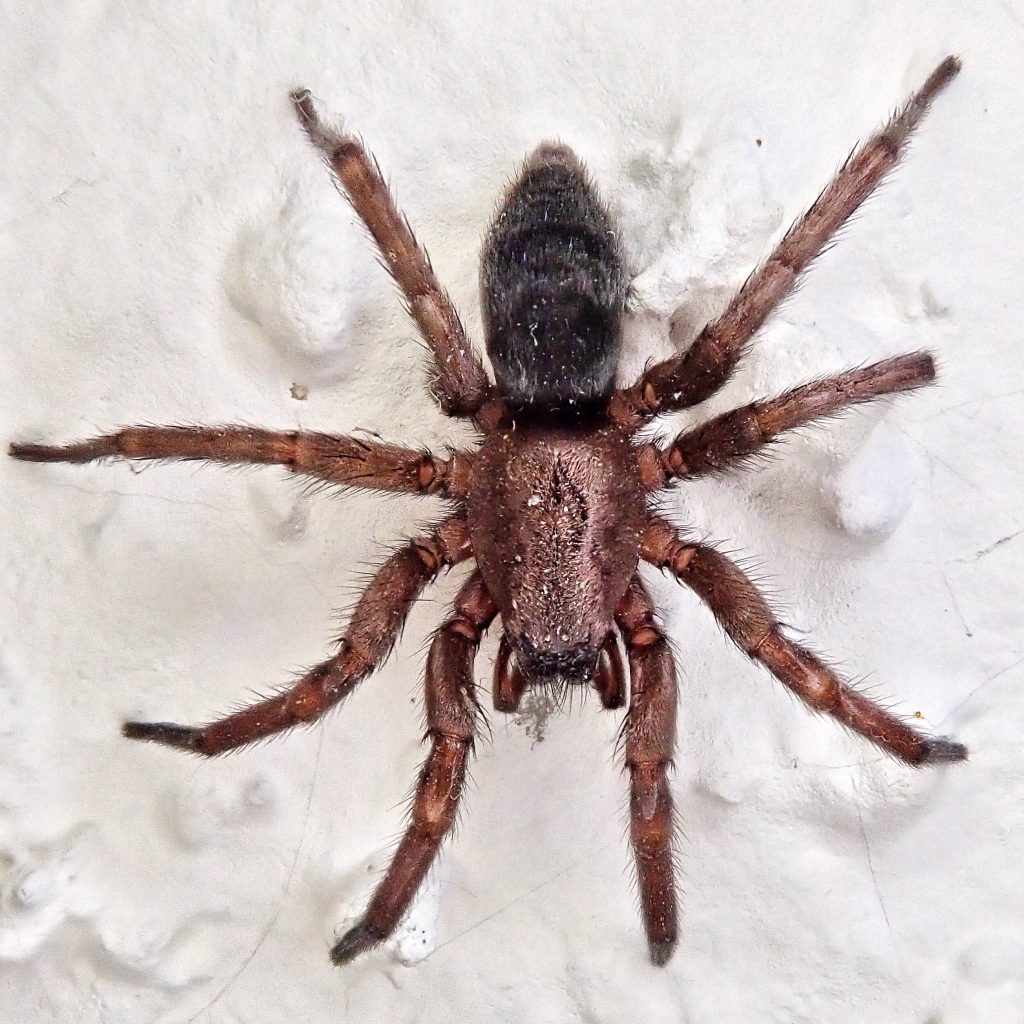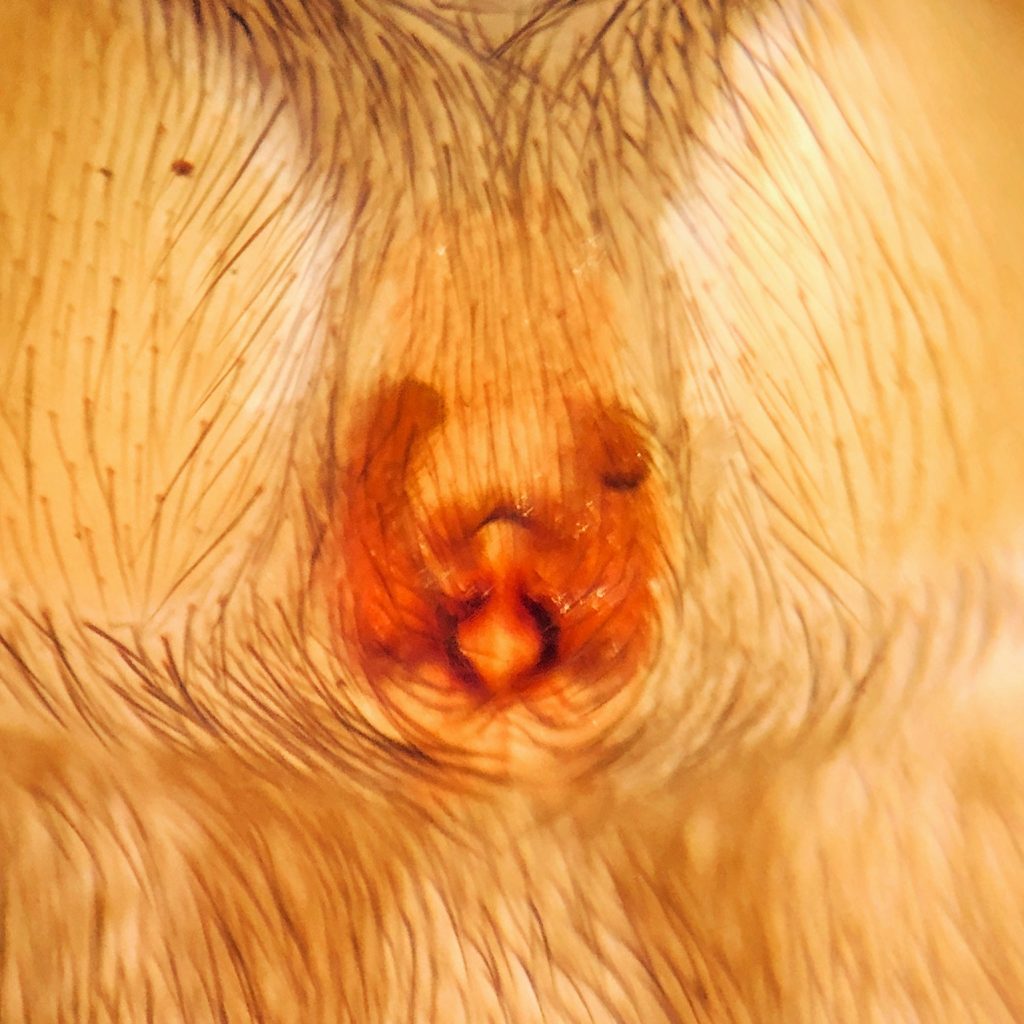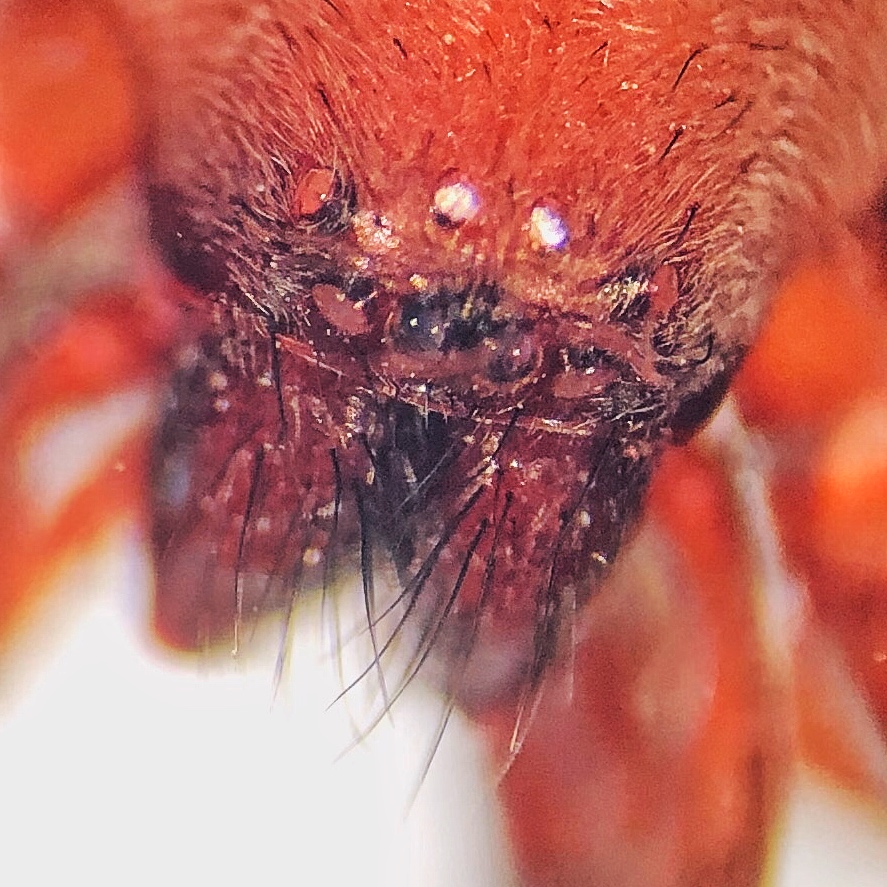
The use of the common name Mouse Spider for these members of the ground spider family Gnaphosidae is not ‘accepted’ by arachnologists because there is a genus of spiders (Missulena) that are called mouse spiders. They are not only in a different family, but in a separate infraorder, Mygalomorphae, which also includes tarantulas and trapdoor spiders. However they are primarily found in Australia, (with a disjunct population in Chile), so for our purposes I do not think using Mouse Spider for this common Gnaphosid will generate much confusion.
Scotophaeus blackwalli is a European spider that has been here on the West Coast for a very long time, probably dating back to the first ships from Europe to dock in our ports. It is synanthropic, meaning it is characterized by an association with humans and is usually found in or near our structures.
Mouse Spiders are medium sized (body length 7-12mm) with short gray ‘mousy’ pubescence (hairs) on the abdomen, which is the origin of the common name. The cephalothorax and stout legs are reddish brown. They are very similar to many other Gnaphosidae, and positive identification can only be made by examining genitalia. Males must be dissected, but females can be turned upside down and examined (quickly) after refrigeration has made them torpid, using a hand lens or very good macrophotography. I am grateful to the arachnologist Sarah Rose for confirmation of my identification based upon my photo of this spiders epigynum (Content Warning- photo of spider genitalia ahead).

While Scotophaeus blackwalli isn’t reported all that often it is probably fairly common, especially in outbuildings. They are often found indoors in the fall, usually patrolling walls and ceilings. They do not build webs, stalking their prey instead. And apparently they will scavenge dead insects, since several British lepidopterists have reported finding them eating their specimens. They are most commonly reported west of the Cascades. But they are probably underreported in general due to the difficulty of making a positive identification. Scotophaeus means dark gray in Greek. The species epithet blackwalli commemorates John Blackwall, a pioneering arachnologist in 19th century Great Britain who was also a correspondent with Charles Darwin.

https://www.danmarks-edderkopper.dk/species-description?taxon=Scotophaeus%20blackwalli
https://bugguide.net/node/view/248049
Size- 7-12mm
Habitat- Usually in or near man made structures
Range- Mostly west of the Cascades
Eats- Stalks and ambushes prey without utilizing a web.
Flight Season- Adults may be found year around.
Haha – I like your warning about graphic content ahead!
Great profile! Thanks!
I have a captive specimen that I’ve been examining. It has built a small web in its enclosure(this may have been only for molting purposes). The web is teepee shaped (possibly due to the enclosure shape). My specimen is very good at climbing glass and is active only at night.
Cool! Thanks for sharing those observations with us, Maris!
I have 3 specimens, one of which i have been keeping for about two years now! Right now i believe it has stopped growing, and it is about an inch in length. It has webbed up its enclosure quite heavily, and lives in a little burrow under a small hide i provided it. I feed it moths mainly since we have an infestation lol. The first year since i trapped it it was quite bolty and would race around its enclosure at any slight movement, however now it has slowed down and still jerks when i remove the lid, but stays relatively still in its webbed area. Like the other commenter said, they are most active at night. One stays hidden all day, i hardly see it, and is also quite bolty. Another stays outside on its web all day, is very calm, and only retreats to a makeshift burrow i made it when it molts. The old one i talked about sometimes hides, and sometimes comes out. All of them use their webs to detect something walking or struggling on it, however of course they wander at night.
Thanks for sharing that, Lupita! It’s interesting that the one has lived for two years. Apparently a protected environment with adequate food can trump genetics!
I have a blackwalli at home, he is always on the ground, seems sad I don’t know what to do with him. 😢 How can I make a home for him?
I would imagine that he is as happy as a spider can be, Aynaz! He has a home-yours😀 Imprisoning him seems like it would be counterproductive to his well being.